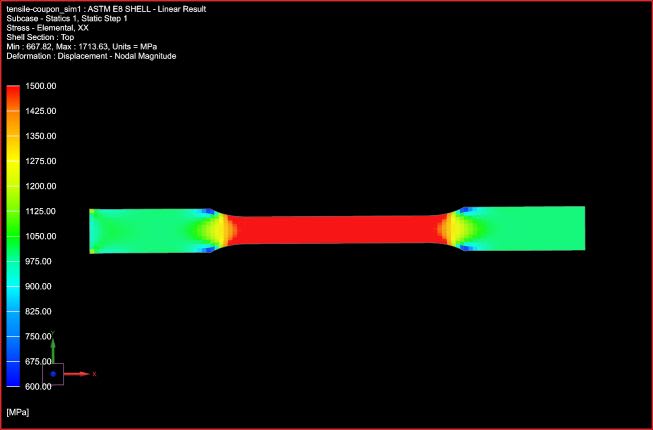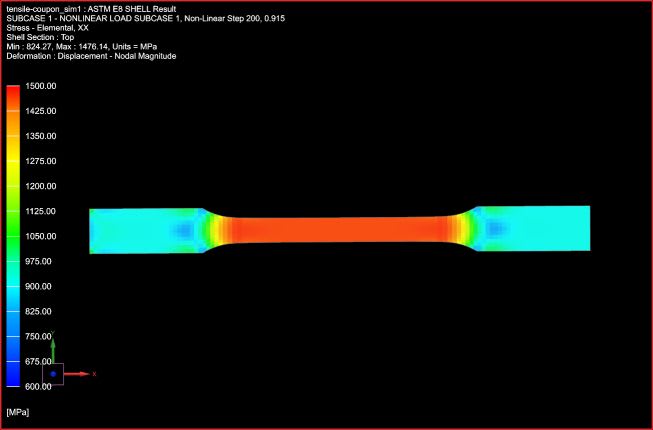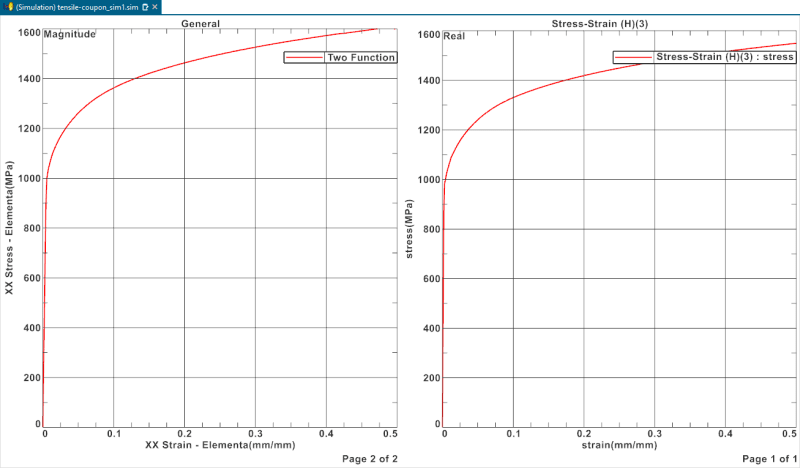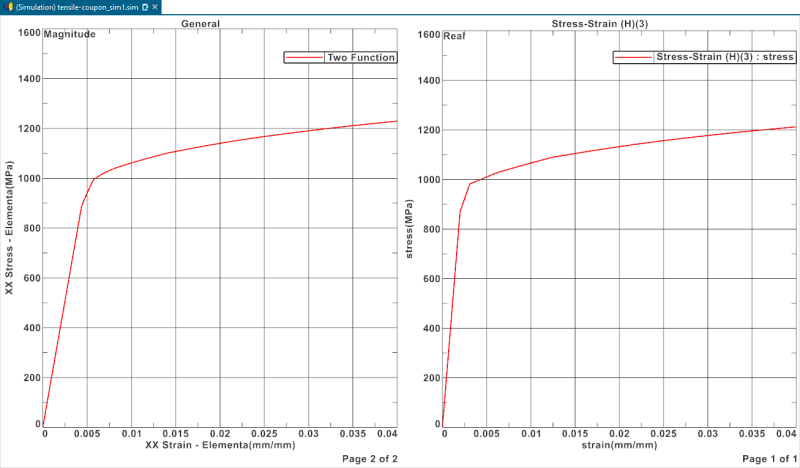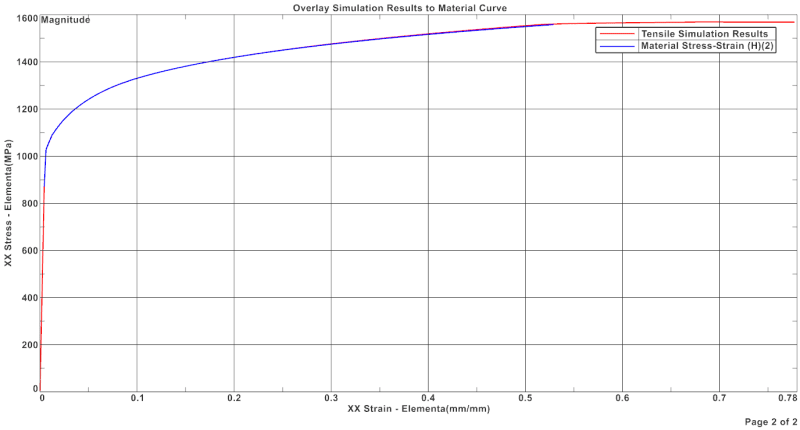Hi,
I have tried to simulate a tensile test of a dogbone specimen using SOL 106 in order to check my grasp of nonlinear simulation which I am still learning. Based on my results, I seem to be falling short in my understanding. The model consists of CQUAD4 shell elements, with one end of the specimen fully fixed and the other end subjected to a force only in the DOF 1 direction (aligned with the length of the specimen). I have LGDISP turned on. The material is defined by the stress-strain curve on the right side of the image below. The results of one of the elements with the highest stresses are shown as a stress-strain plot on the left side of the image. I was expecting the 2 curves to look similar, but the results from my simulation show 3 straight lines and not the same shape of the curve defined in the material. As well, the initial slope clearly doesn't match.
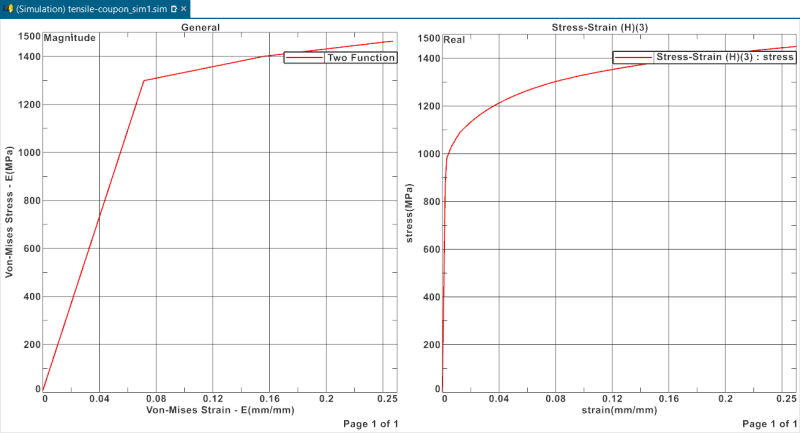
What could it be that I haven't taken into account (either in my understanding or in the simulation setup)?
Thanks,
Jeff
I have tried to simulate a tensile test of a dogbone specimen using SOL 106 in order to check my grasp of nonlinear simulation which I am still learning. Based on my results, I seem to be falling short in my understanding. The model consists of CQUAD4 shell elements, with one end of the specimen fully fixed and the other end subjected to a force only in the DOF 1 direction (aligned with the length of the specimen). I have LGDISP turned on. The material is defined by the stress-strain curve on the right side of the image below. The results of one of the elements with the highest stresses are shown as a stress-strain plot on the left side of the image. I was expecting the 2 curves to look similar, but the results from my simulation show 3 straight lines and not the same shape of the curve defined in the material. As well, the initial slope clearly doesn't match.

What could it be that I haven't taken into account (either in my understanding or in the simulation setup)?
Thanks,
Jeff

